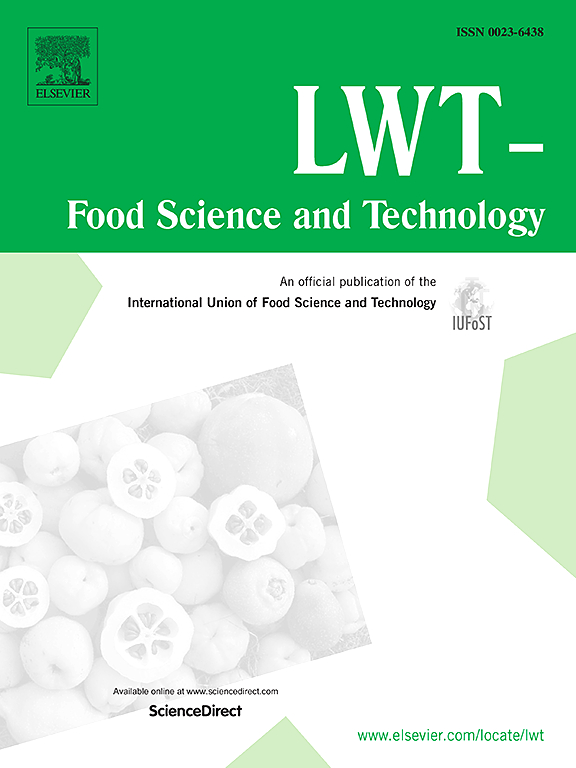Integrating kinetic models and BP-ANN for predicting growth and shelf-life of Listeria monocytogenes in ready-to-eat salads
IF 6
1区 农林科学
Q1 FOOD SCIENCE & TECHNOLOGY
引用次数: 0
Abstract
Ready-to-eat (RTE) salads are popular for their convenience and health benefits. However, their reliance on refrigeration increases the risk of contamination by Listeria monocytogenes. In this study, vegetable salads (VS) and salads with 10% (10S), 20% (20S), and 30% (30S) chicken breast were inoculated with a L. monocytogenes cocktail and stored at 4, 10, or 15 °C for 14 days. The results indicated that higher storage temperatures and longer durations significantly increased microbial activity. A positive relationship was observed between chicken breast content and total viable count (TVC) as well as L. monocytogenes growth. At the end of storage, the TVC in 30S was 8.57 ± 1.39 log CFU/g higher than that in VS. As determined by the logistic model, the highest maximum growth rate (μmax) observed in 30S at 15 °C was 0.0589 ± 0.0004 log CFU·g−1·h−1. Salads with meat had a shelf life of up to 9 days, while the increase in L. monocytogenes in VS remained below 3.4 log CFU/g throughout the storage. Furthermore, the equation μmax-30S = {0.0059 × (T + 25.9983)}2 was used to indirectly optimize shelf-life assessments for retail salads and provide reliable estimations (R2 = 0.9951). The study successfully incorporated the back-propagation artificial neural network (BP-ANN) to validate the accuracy of traditional kinetic models in predicting the μmax of L. monocytogenes. An R2 greater than 0.97 was achieved across all training data. These findings offer invaluable insights for optimizing storage practices and improving food safety risk assessments for RTE salads.
求助全文
约1分钟内获得全文
求助全文
来源期刊

LWT - Food Science and Technology
工程技术-食品科技
CiteScore
11.80
自引率
6.70%
发文量
1724
审稿时长
65 days
期刊介绍:
LWT - Food Science and Technology is an international journal that publishes innovative papers in the fields of food chemistry, biochemistry, microbiology, technology and nutrition. The work described should be innovative either in the approach or in the methods used. The significance of the results either for the science community or for the food industry must also be specified. Contributions written in English are welcomed in the form of review articles, short reviews, research papers, and research notes. Papers featuring animal trials and cell cultures are outside the scope of the journal and will not be considered for publication.
 求助内容:
求助内容: 应助结果提醒方式:
应助结果提醒方式:


